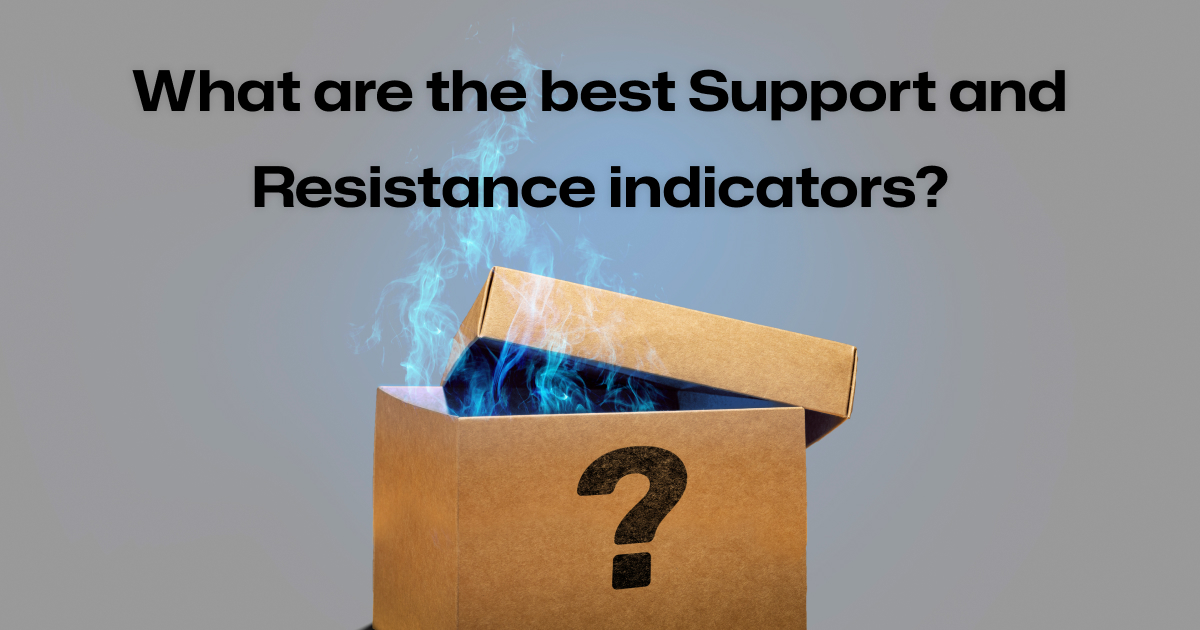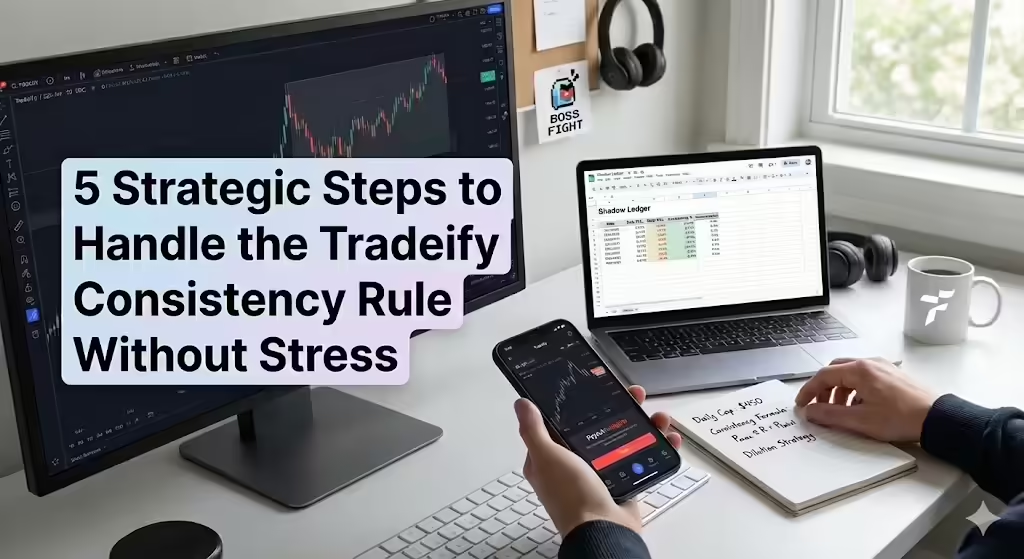Brett is a seasoned day trader with over eight years of experience in the financial markets.He is the Founder and CEO of Tradeify Funding, a platform offering instant funded trading accounts to traders seeking capital.
Support and resistance are foundational concepts in technical trading. Understanding where price might pause, reverse, or break through is critical for making informed trading decisions. While manually plotting support and resistance lines is effective, leveraging the right tools can dramatically improve speed, accuracy, and confidence. This is where choosing the right support and resistance indicator becomes a game-changer.
In this article, we’ll walk through the top 5 support and resistance indicators used by professional traders across stocks, forex, and crypto — and how you can apply them to sharpen your strategy.
Why Use a Support and Resistance Indicator?
While price action gives raw data, indicators help process that data into clear, actionable insights. Here’s why you need a dedicated support and resistance indicator:
- ✅ Automates key level detection to save time and reduce guesswork.
- ✅ Eliminates human bias in drawing zones.
- ✅ Enhances precision with real-time recalculations.
- ✅ Helps confirm trade setups alongside other tools like RSI or MACD.
- ✅ Improves risk-to-reward planning with clearly marked levels.
- ✅ Identifies institutional activity zones that may otherwise be hard to spot manually.
Support and resistance indicators allow you to focus on execution and strategy instead of constantly adjusting lines and levels manually.
1. Pivot Points Indicator
What It Does:
Calculates daily, weekly, or monthly support and resistance levels based on previous session’s high, low, and close.
Best For:
- Intraday and swing traders.
- Quickly identifying confluence zones.
Key Strengths:
- Dynamic recalculation every session.
- Clear S1, S2, R1, R2 levels for structured planning.
Pro Tip:
Combine with price action confirmation at R1 or S1 for high-probability reversals. Use R2/S2 for extended take-profit targets in trending markets.
2. Volume Profile (Visible Range)
What It Does:
Analyzes traded volume at specific price levels, not just over time.
Best For:
- Day traders and scalpers.
- Spotting zones where institutions have participated heavily.
Key Strengths:
- Reveals high-volume nodes (support zones).
- Exposes low-volume gaps (breakout/breakdown areas).
- Helps identify value areas versus price extremes.
Pro Tip:
Look for price stalling near high-volume zones — a signal that support or resistance may hold. Combine with VWAP for stronger institutional confluence.
3. Auto Support/Resistance by TradingView (or Similar Tools)
What It Does:
Automatically plots horizontal support and resistance levels based on historical swing highs/lows.
Best For:
- Beginners and intermediate traders.
- Those using clean chart setups.
Key Strengths:
- Minimalist, real-time levels.
- Customizable lookback period and sensitivity.
- Removes emotional bias in identifying price reaction zones.
Pro Tip:
Use with a trailing stop strategy for defined exits around strong resistance or support levels. Helps avoid overtrading by filtering out noise.
4. Fibonacci Retracement Tool
What It Does:
Identifies potential retracement and extension levels using key Fibonacci ratios (38.2%, 50%, 61.8%, etc).
Best For:
- Trend followers.
- Spotting pullback zones in a continuation move.
Key Strengths:
- Universally respected by traders and algos.
- Works across timeframes and asset classes.
- Aligns well with harmonic and Elliott Wave analysis.
Pro Tip:
Combine with a support and resistance indicator like pivots to build multi-layered confluence. A price rejection at a 61.8% retracement near a pivot R1 is a powerful signal.
5. Supply and Demand Zones Indicator
What It Does:
Highlights areas where price reacted strongly, indicating unfilled institutional orders.
Best For:
- Price action traders.
- Identifying large reversal zones.
Key Strengths:
- Tracks large moves from basing structures.
- Often marks the origin of trends.
- Offers both entry and exit areas with high R:R potential.
Pro Tip:
Wait for price to return to a demand zone with bullish confirmation before entering long. Look for tight consolidation followed by a breakout for the highest probability moves.
How to Combine These Indicators Effectively
Using multiple tools doesn’t mean cluttering your charts. Instead, combine 2–3 that complement each other.
Example Combo:
- Pivot Points + Volume Profile + Fibonacci = powerful multi-confirmation setup.
- Use Auto Support/Resistance as your base map.
- Add Supply/Demand for zones of institutional interest.
Make sure all indicators align with the higher timeframe trend. When price hits a support zone confirmed by multiple tools, the probability of a bounce significantly increases.
Mistakes to Avoid When Using Support and Resistance Indicators
- ❌ Blindly trusting levels without confirmation.
- ❌ Using too many conflicting tools at once.
- ❌ Ignoring the higher timeframe context.
- ❌ Trading near news events when volatility can wipe zones.
- ❌ Neglecting to backtest — not all indicators work the same across assets.
Bonus: Tips for Smarter Trading Using Support and Resistance
- 🔍 Use higher timeframes (1H, 4H, Daily) for major zones.
- 📈 Confirm with candlestick patterns (e.g., pin bars, engulfing).
- 📊 Add momentum indicators like RSI/MACD for confluence.
- 🎯 Always define your risk below/above support and resistance levels.
- 🧪 Backtest your setup with each support and resistance indicator for consistency.
- 🧠 Maintain a trading journal to record which levels worked best and why.
Unlock Your Trading Potential with Tradeify
Using the right support and resistance indicator is just the beginning. To execute with confidence and scale your strategy, you need more than tools — you need capital, structure, and community.
Join Tradeify today and access:
- Funded trading accounts
- Real-time indicator alerts and strategy breakdowns
- A team of professional traders helping you refine your edge
- Educational content to sharpen your analysis skills
- Live mentorship calls and strategy Q&As every week
Don’t just follow the market. Lead with precision — with Tradeify.
Final Thoughts
Choosing the right support and resistance indicator is crucial for building an accurate, disciplined trading strategy. Whether you're day trading or swing trading, these tools help simplify decision-making and improve your edge.
Start with 1 or 2 indicators, test them thoroughly, and build a system that suits your style. Remember that indicators are there to guide your decision-making, not replace it. Your understanding of price behavior around these levels is what turns tools into profits.
Smart trading starts with smart analysis — and it all begins with understanding where price is likely to react.
Plan clearly. Trade confidently. Win consistently — with Tradeify.
.svg)
Get up to $750k instant sim funding
- Start earning payouts instantly
- Super fast automated payouts
- Free journal to improve
.svg)


.svg)




.webp)
